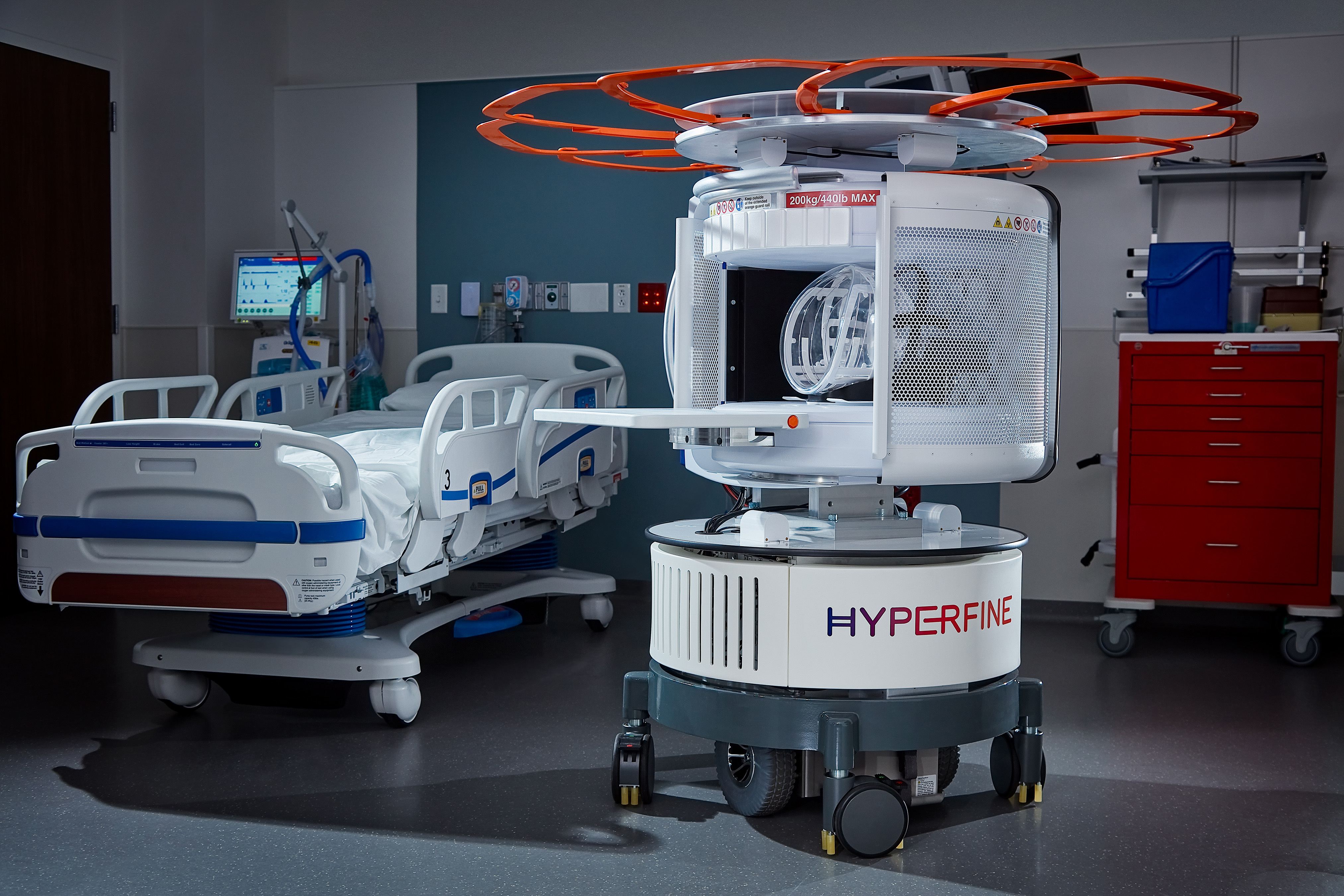Study Shows Value of Portable MRI to Quickly Assess Stroke Patients
Images

A multi-site observational study shows the value of using the Swoop Portable MR Imaging System from HyperFine to quickly assess stroke patients and help guide physicians making critical treatment decisions. This publication marks the first to include a subset of ACTION PMR study data and shows encouraging results.
The study, entitled "Diffusion-Weighted Imaging and Fluid-Attenuated Inversion Recovery Mismatch on Portable, Low-Field Magnetic Resonance Imaging Among Acute Stroke Patients,” will be published in the August 2024 issue of the Annals of Neurology. It included 71 patients and was conducted by a team from several institutions, including Massachusetts General Hospital and the University at Buffalo, two of the centers in the ACTION PMR study.
"Our goal is to assess whether portable, ultra-low-field MRI can be used as a tissue clock to characterize acute stroke, which has the potential to inform treatments and improve outcomes. Thus far, we have convincing data on FLAIR showing that this is, in fact, the case," said Dr Taylor Kimberly, Chief of the Division of Neurocritical Care at Massachusetts General Hospital, one of the lead authors.
“We would like to congratulate Dr. Kimberly and all the authors on this elegant study demonstrating the Swoop system’s utility in stroke management,” said Edmond A. Knopp, MD, Hyperfine Vice President of Medical Affairs. “We eagerly await additional analysis of the entire ACTION PMR dataset, which we believe will show the benefit that Swoop® system images can bring to the overall care and management of patients presenting with symptoms of acute cerebral ischemic disease.”
The Acute Ischemic Stroke Detection with Portable MR (ACTION PMR) study is a prospective, international, multi-site observational study that aims to examine the integration of brain imaging with the portable Swoop system into the stroke diagnosis and treatment workflow. ACTION PMR has already enrolled over 100 patients at four institutions and is composed of a series of investigator-sponsored studies. The initial 100 patients allow for a direct comparison of stroke detection between ultra-low-field MRI, conventional high-field MRI, and CT as a means to assess the capability of stroke detection of the Swoop system. The study will continue into a workflow phase starting later this year, evaluating the ease of access and versatility of using the Swoop system in emergency departments and stroke centers within hospital networks.